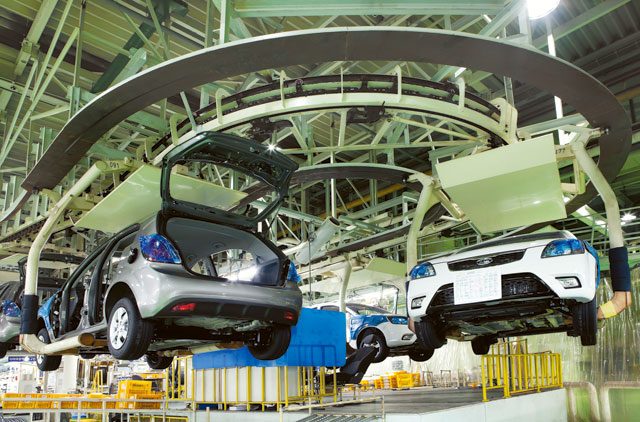By numbers, the automotive industry in South Korea has had a strong year so far. According to the latest report released by Korea Automobile Manufacturers Association (Kama), domestic production of South Korean car manufacturers increased to more than three million units in the first eight months of the year, 2.1 per cent higher than in the same period last year. Of the entire production, 947,559 units were sold in the domestic market, a 3.6 per cent increase year-on-year, the Kama report says. Export figures remained flat up to August, with an increase of just 0.1 per cent to 2.04 million cars sold abroad in the first half of the year.
However, Kim Yong-geun, President and CEO, Kama, says overseas sales should hit $77.8 billion (about Dh285.7 billion) this year, which translates into an increase of 4.1 per cent in exported vehicles. The total number of cars shipped abroad is expected to rise to 3.2 million, a new record for a one-year period, he says. Automotive parts shipments are also expected to increase by 2.7 per cent to $26.8 billion.
Main concern
But what worries industry observers is that the market share of South Korean cars in the domestic market is shrinking. In fact, the share of locally made automobiles in South Korea is down 1.9 per cent from 2012, while the market share of imported cars grew from 8 to more than 10 per cent over the same time, states Kama data. “Imported cars will easily take up at least 20 per cent in the next few years unless South Korean carmakers produce more attractive models in terms of both quality and price,” says Kim Tae-nyen, Executive Director, Kama. But the growing problems of the domestic car market in South Korea have a multitude of reasons. Firstly, Japanese competition takes advantage of the weak yen to step up its sales.
Secondly, the Free Trade Agreement between South Korea and the European Union (EU) that came into effect in 2011 spurred imports of European cars whose exports to South Korea were up from $2.6 billion in 2011 to more than $3.2 billion in 2012, a surge of 27.7 per cent, while car exports from South Korea to the EU dropped by 14.9 per cent, according to data from the European Commission.
Sales of German premium cars, such as BMW, Mercedes and Porsche, are doing very well in South Korea, states the European Commission’s report.
In addition, French automaker Citroen resumed sales in the South Korean market after a decade-long hiatus in the wake of the Free Trade Agreement. Similarly, Italy’s Fiat
also returned to Korea for the first time since 1997 thanks to the agreement. “In line with the process of globalisation of the South Korean auto industry, there are new emerging issues that we need to face and resolve,” says Kim.
Among “complicated and uneasy challenges”, the industry is encountering “trade issues, issues with labour-management relations”, as well as “environment and safety issues”, in the home market, he explains.
Searching abroad
South Korea’s automobile industry is still the fifth-largest in the world and also the fifth-largest exporter by volume, but the aforementioned internal pressures together with high taxes on vehicles and gasoline on the domestic market have forced South Korean manufacturers to venture aggressively into foreign markets, most of all the US and Europe, even though they encounter massive battles with price-aggressive Japanese
car manufacturers.
Another challenge for South Korean carmakers in international markets, especially in Asia, will soon be Chinese automobile manufacturers. So far, quality and standards of Chinese cars are still below South Korean levels, but the aggressive pricing of Chinese vehicles and continuous quality improvements are beginning to eat into the shares of South Korean-made cars sold in emerging markets.
To counter the development, South Korean carmakers are investing in overseas plants, with the latest being second-largest manufacturer Kia Motors pouring $1 billion into the construction of a new car plant in Mexico to serve the North American market. Plants such as this reduce South Korean carmakers’ reliance on its home market, where high labour costs and a strong currency continue to erode cost-competitiveness.
“We decided to build a Mexico factory because it is inevitable for us to venture into new markets to secure future growth engines and survive global competition,” Kia Motors said in a statement when the new plant, one of the largest South Korean car builders abroad, was announced on August 27. With the plant, slated to open in 2017, Kia Motors will produce more than half of its vehicles outside its native country.
Kia’s affiliate Hyundai Motors Company has already increased the percentage of overseas production from 54 per cent in 2011 to 61 per cent this year.
In the driver’s seat
The South Korean car industry has done well this year, but prepares for stiff competition from foreign carmakers








